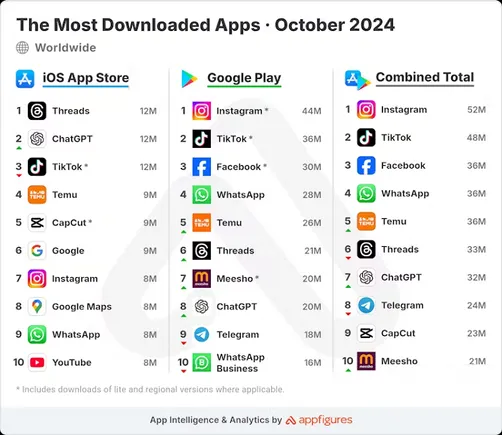Reading Time: 7 minutes
Have you ever invested in a consultant, or done consulting work yourself? If so, you’re familiar with the process of “discovery” where the consultant learns about the key aspects of a business that are relevant to their field of expertise, then listens to the client share their biggest challenges and struggles. Once that’s been shared, the consultant’s mind combines what they now know about the business, what issues they see underlying the spoken challenges or goals, combine that with their experience and knowledge, and start sharing advice.
What if AI could do that for you, for free? Imagine how much you could benefit from having an AI marketing consultant at your fingertips – whether the AI is helping you or you’re relying on it to assist with clients – there’s no doubt you can save yourself time and potentially achieve greater success.
Since the large language models (LLMs) like ChatGPT, Claude, Gemini, and so on, have been trained on extensive knowledge in every area of expertise, the models are well-positioned to be valuable consultants to us.
As long as we don’t skip that vital piece – discovery.
That’s the flaw in the models today, as they’re programmed to be helpful which means even when we skip the discovery, provide zero context, and just as the AI a question, it’s going to answer no matter what.
Today I’m going to share with you five examples of AI chain prompts you can have with an AI that will help you create really great marketing strategies or tactics. Whether you use these examples or not, consider them and what other tasks or angles you might talk to the AI about in your role and business, and give it a try.
Understanding and Mastering AI Chain Prompts
I mentioned AI chain prompts above and it’s an important concept in generative AI for marketing that I want to spend just a moment on before we get into the examples.
Chain prompting is a technique used to guide AI through a series of interconnected questions or tasks, allowing for more complex and nuanced interactions. This approach helps marketers obtain more detailed, relevant, and actionable insights from AI tools like ChatGPT.
What are AI Chain Prompts?
Chain prompting involves breaking down a larger task or query into a series of smaller, sequential prompts. Each prompt builds upon the information and responses from previous prompts, creating a “chain” of interactions that leads to a more comprehensive and tailored final output.
Benefits of AI Chain Prompts:
- Allows for more detailed and specific responses
- Helps maintain context throughout the conversation
- Enables the AI to tackle complex tasks step-by-step
- Provides opportunities for clarification and refinement at each stage
Best Practices and Tips:
- Start Broad, Then Narrow Down: Begin with general questions and gradually become more specific as the conversation progresses.
- Use Clear Transitions: Clearly indicate when you’re moving to a new aspect of the task or topic.
- Leverage Previous Responses: Refer back to information provided in earlier prompts to maintain context and build upon previous insights.
- Ask for Summaries: Periodically ask the AI to summarize key points to ensure accuracy and understanding.
- Use Hypotheticals: Present hypothetical scenarios to explore different angles of a problem or strategy.
- Encourage Creativity: Ask the AI to think “outside the box” or provide alternative perspectives on a given topic. Remember the default answer will be the most popular one.
- Validate Assumptions: Regularly check if the AI is making any assumptions and clarify when necessary.
- Break Complex Tasks into Steps: For intricate marketing strategies, break them down into manageable steps and address each one sequentially.
Things to Avoid:
- Overwhelming with Information: Don’t provide too much information in a single prompt. Break it down into digestible chunks.
- Lack of Specificity: Avoid vague or overly broad questions that might lead to generic responses.
- Ignoring Context: Don’t disregard previously established context when moving to new topics within the chain. For instance, if you want to work on a new business or client, start a new chat.
- Assuming AI Omniscience: Remember that while AI has broad knowledge, it may not have real-time or specialized information about your specific industry or brand. Don’t expect it to know trends.
- Skipping Verification: Don’t accept all AI-generated information without verification, especially for critical business decisions.
- Rigid Thinking: Be open to unexpected insights or directions the AI might suggest, as they could lead to innovative ideas.
- Neglecting Human Insight: Use AI as a tool to augment your expertise, not replace critical thinking and decision-making.
Example AI Chain Prompt Structure:
- Initial query to set the context
- Follow-up questions to clarify and expand
- Request for specific examples or applications
- Ask for potential challenges or limitations
- Seek solutions or strategies to address challenges
- Final summary and action steps
By following these guidelines and avoiding common pitfalls, marketers can harness the full potential of chain prompting to generate valuable insights and strategies for their marketing efforts.
Setting the Stage: Introducing Your Brand to AI with Prompts
Before diving into specific marketing tasks, it’s essential to provide the AI with comprehensive background information about your brand. This context will allow the AI to generate more relevant and accurate responses tailored to your specific business needs. Here’s how to start the conversation:
1. Initiate the Conversation:
Begin by saying something like:
“I’d like to provide you with background information about my brand. This context will help you understand our business better for future marketing-related questions and tasks. Please confirm when you’re ready to receive this information.”
2. Provide Brand Overview:
Once the AI confirms, share the following details:
- Company name and industry
- Mission statement and core values
- Brief history of the company
- Target audience demographics and psychographics
- Key products or services offered
- Unique selling propositions (USPs)
- Brand voice and tone guidelines
3. Market Position:
Explain your brand’s position in the market:
- Main competitors
- Current market share (if known)
- Strengths and weaknesses compared to competitors
4. Marketing Goals and Challenges:
Outline your current marketing objectives and any significant challenges:
- Short-term and long-term marketing goals
- Key performance indicators (KPIs) you track
- Major challenges or obstacles in reaching your target audience
5. Current Marketing Strategies:
Provide an overview of your existing marketing efforts:
- Primary marketing channels used (e.g., social media, email, content marketing)
- Most successful past campaigns or initiatives
- Any ongoing marketing campaigns or initiatives
6. Brand Assets:
Mention any significant brand assets or resources:
- Website URL
- Social media profiles
- Key brand messages or slogans
- Any notable brand partnerships or collaborations
7. Regulatory Considerations:
If applicable, mention any industry-specific regulations or compliance requirements that affect your marketing activities.
8. Confirmation and Follow-up:
After providing this information, ask the AI to summarize the key points to ensure it has accurately captured the essence of your brand. You can say:
“Based on the information I’ve provided, could you please summarize the key aspects of our brand? This will help me confirm that you’ve accurately understood our business context.”
By following these steps, you’ll create a solid foundation for all future marketing-related conversations with the AI. This context will enable the AI to provide more precise, relevant, and valuable insights tailored to your specific brand needs.
If you see yourself having these conversations frequently, you can store the above information in a document to easily paste into a model before starting a new chat (Prompt Library), or set it up as a Custom GPT. You can also stop right now and ask the AI to summarize everything you just talked about into a new prompt for future use. Because don’t forget – as of today, AI models still have a limited amount of memory available for recalling the previous chat history. After a while, it will lose context, so save this work for future reference.
Practical AI Chain Prompts for Marketing Success
Now that we’ve established how to introduce your brand to AI and understand the power of chain prompts, let’s dive into specific chain prompt sequences. These are designed to help you tackle common marketing challenges and generate valuable insights. Remember to start each sequence by referring to the brand context you’ve previously provided.
1. Developing a Content Strategy
Initial Prompt: “Based on our brand’s target audience and goals, what content themes would resonate most with our customers?”
Follow-up Prompts:
- “For the theme [insert theme], what specific topics could we cover?”
- “How can we adapt these topics across different content formats (blog posts, social media, videos)?
- “What potential challenges might we face in creating this content, and how can we overcome them?”
- “Can you suggest a content calendar for the next month based on these themes and topics?
2. Crafting a Social Media Campaign
Initial Prompt: “We want to create a social media campaign to promote our [brand/product/service]. What platform would be most effective given our target audience?”
Follow-up Prompts:
- “What key messages should we focus on for this campaign?”
- “Can you suggest 5 post ideas that align with our brand voice and campaign objectives?”
- “How can we incorporate user-generated content into this campaign?”
- “What metrics should we track to measure the success of this campaign?”
And like we just talked about on the AI in Marketing: Unpacked podcast with Jeff Sieh, you can use the AI here to help you craft prompts for image assets that you can plug into a different tool like MidJourney or Magai.
3. Optimizing Email Marketing
Initial Prompt: “We want to improve our email open rates and click-through rates. Based on our industry and target audience, what strategies would you recommend?”
Follow-up Prompts:
- “Can you provide 5 examples of engaging subject lines for our next email campaign?”
- “How can we segment our email list to provide more personalized content?”
- “What elements should we include in our email design to improve engagement?”
- “Can you suggest a structure for an A/B test to optimize our email performance?”
4. Enhancing SEO Strategy
Initial Prompt: “Given our brand’s key products/services and target audience, what long-tail keywords should we focus on for our SEO strategy?”
Follow-up Prompts:
- “For the keyword [insert keyword], can you outline a structure for a comprehensive blog post?”
- “How can we optimize our website’s meta descriptions and title tags for these keywords?”
- “What off-page SEO tactics would be most effective for our brand?”
- “Can you suggest a plan to track and report on our SEO progress?”
5. Developing a Customer Retention Strategy
Initial Prompt: “We want to improve our customer retention rates. Based on our brand and target audience, what strategies would you recommend?
Follow-up Prompts:
- “How can we use our existing customer data to identify at-risk customers?”
- “Can you suggest a loyalty program structure that would appeal to our customers?”
- “What types of personalized communications could we implement to improve retention?”
- “How can we measure the effectiveness of these retention strategies?”
Remember, these are starting points. Feel free to adapt and expand these prompts based on your specific needs and the AI’s responses. The key is to maintain a logical flow, building upon each response to gather comprehensive, actionable insights for your marketing efforts.
Give this technique a try and let me know how it goes for you!
Related
Discover more from The Social Media Hat
Subscribe to get the latest posts sent to your email.










